Scrap Wood Abstract Fish
This fish was made from leftover scraps of wood that we had saved from a book-shelf we had built a few years ago. The fish was drawn out on the wood freehand and then cut with a scroll-saw. The fish was sanded around the edges just enough to smooth it out. We then drilled a hole big enough to insert a small dowel-rod into the fish body and two holes were also drilled for the glass eyes at this time. The bottom fins were hand cut from fine cuts of the 2×4. To create the base, we used a piece of 2×4 and mitered the edge to give it a rounded cut around the top of it. We then aligned the fish with the base to find the balance point to drill a hole into the base to insert the bottom part of the dowel-rod from the fish body. Wood glue was used to glue the pieces together. The whole thing was then primed with gesso to assure even paint absorption. Then the fun part for me was painting and embellishing the fish.
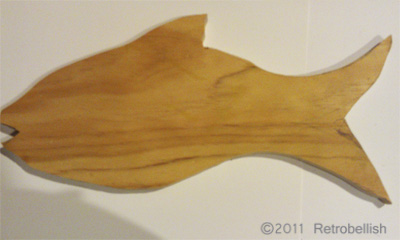
Abstract Wood Fish Cutout
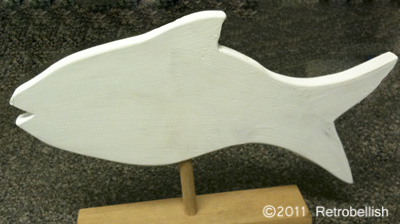
Abstract Wood Fish Primed
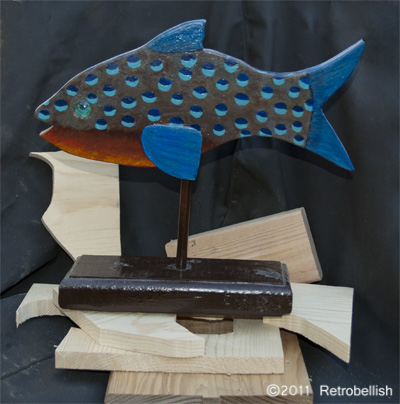
Abstract Wood Fish Left Side
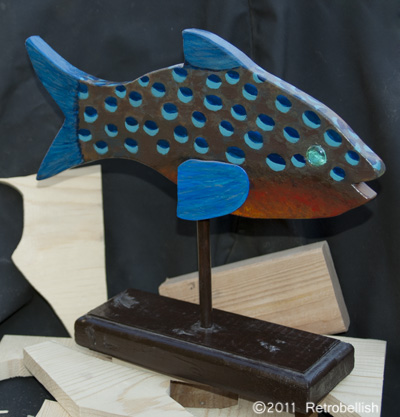
Abstract Wood Fish Right Side
Retrobellish Beaded Fabric Cuff
Recently, I was looking through a fashion magazine and saw several jeweled cuffs that I really liked. Out of curiosity, I thought I’d try to make one of my own. It was a learning experience, because it took a longer time for me to choose the beads than the fabric. I had some interesting black and rustic gold striped fabric and then chose some beads that I thought would look nice against the fabric.
I lined up the beads and moved them around until I chose a pattern that I really liked. Then, instead of individually sewing each bead to the cuff, I decided that for flexibility I’d string about four beads and then tack them down (hand sewing a few stitches at the end through the cuff) before continuing with stringing the next four beads in the pattern I had chosen.
The finished cuff measured approximately 2 inches wide by 10 inches long. For fabric support, I used a 1/8 inch thick interfacing about a ¼ inch smaller than the fabric’s measurements. I wrapped the fabric around the interfacing and hand sewed the fabric with the seam in the back. I also sewed a small piece of solid black fabric over the seam in the back of the cuff to hide the seam and used a small black snap for the cuff’s closure.
Once I completed sewing the beads on the cuff, I felt that the cuff could use a little more embellishment around the edges, so I decided to crochet a small black trim. I used a size 3 crochet thread and size E/4 crochet needle. My simple pattern consisted of 60 chains in the first row. In the second row, I crocheted five chains and single crocheted into the third chain (of the first row). Then I repeated crocheting five chains and single crocheted through the third chain again, creating little loops. I repeated this crochet pattern for the other side of the cuff and then hand sewed both trims onto the cuff. I was really happy with the results.
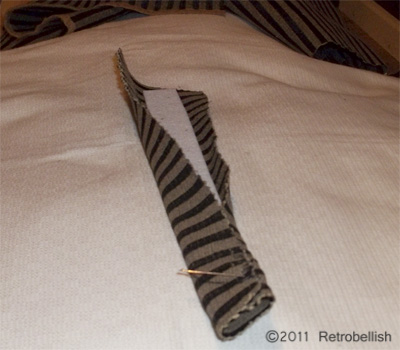
Starting The Beaded Fabric Cuff
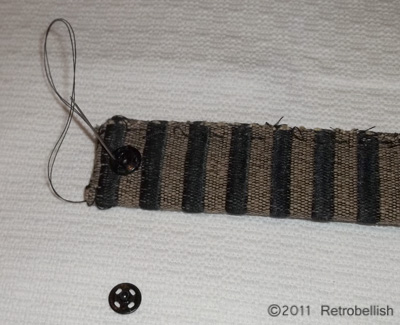
Sewing the Snap On Retrobellish Fabric Cuff
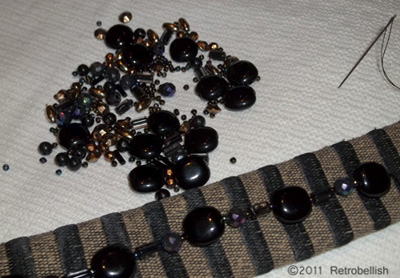
Making the Beaded Fabric Cuff
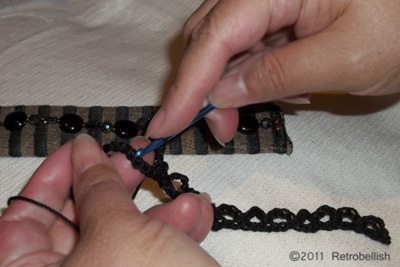
Crocheting the Trim for Beaded Fabric Cuff
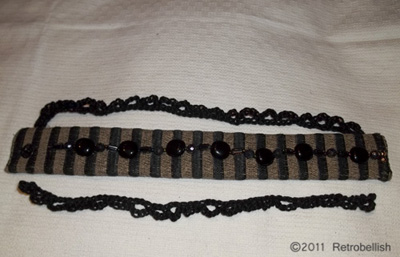
Ready to Sew On the Finished Trims
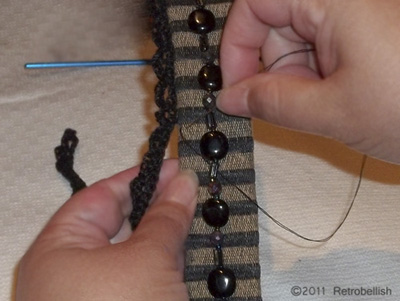
Attaching the Trim to the Finished Cuff
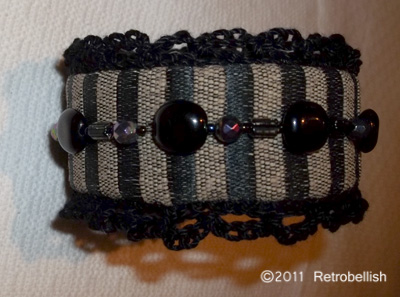
The Finished Beaded Fabric Cuff
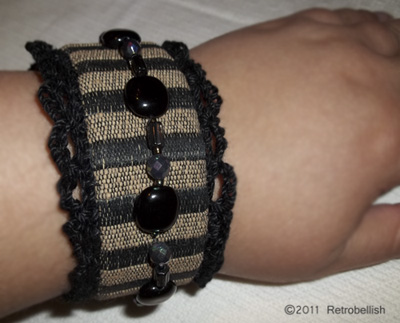
Wearing Finished Beaded Fabric Cuff
Recycled Gas Grill Planter
This tomato planter started out as a gas grill. It was going to be scrapped before David decided to give it a second chance by cleaning it thoroughly then painting the grill bright red. The side shelves were painted orange and he added some glass embellishments on the front. The grill is used to plant two different types of tomatoes and also doubles as a plant holder. The lid and tank from this grill were also recycled. This grill still has the original wheels so it can be moved around the yard easily.
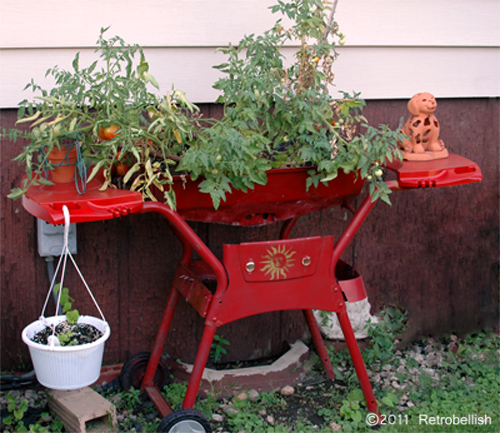
Recycled Gas Grill Planter
Recycled Junk Mail Folk Art
One of the ways we have reclaimed some of the advertising brochures and junk mail around our home is to make paper-mache items. One of our favorite items we make are masks and wall plaques. This lion head which measures about 13″ x 8″ was made using some of the shredded junk mail and brochures that we receive at home during the week. We just used a traditional paper-mache paste that you might remember using in school made of flour and water and a little salt as a preservative. We made the paste in a bucket and then combined the paste and shredded paper together.
We then take this mixture and press it into the cement mold allowing it to dry before removing it from the mold. The lion head mold we used was for a cement lion head used in garden statuary. We then painted the lion head casting with multiple latex acrylic paints to create a faux iron patina for a rustic folk art look. Previously, we have also made this lion out of newspaper instead of the shredded material. This technique can also be made freehand allowing you to express your artistic creativity.
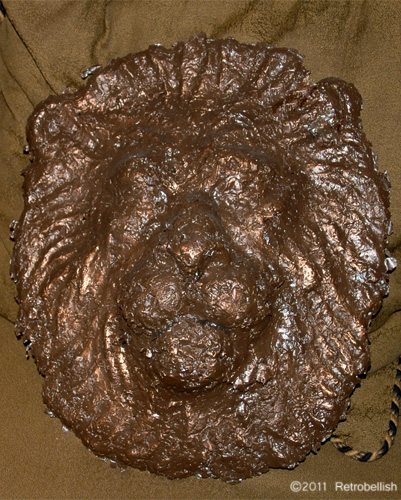
Reclaimed Paper Lion Face
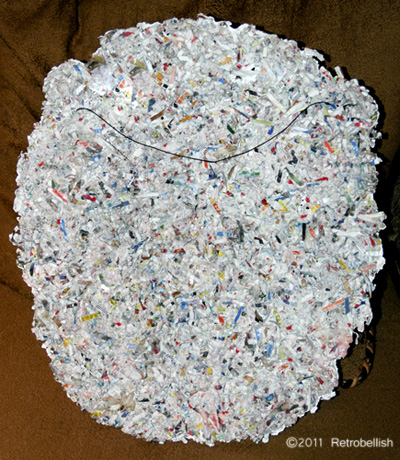
Reclaimed Paper Lion Back Showing Shredded Paper.
Reclaimed Car Tire Trash Art
This flower planter is made from a reclaimed car tire on the rim. The hanging circle is a tire spacer from a semi-truck, the chrome piece is a cap from a semi-truck exhaust pipe, and the north south center is from an old yard decoration. The orange semi tire spacer is suspended by a metal bar shaped from a tru-link fence which is held by an old dog leash, which gives it the freedom to rotate with the wind. The mirror is an old broken store plastic convex mirror and the orange wire in front is also a piece from a tru-link fence. A blue glass bottle embellishes the tire planter. All items used to make this piece were garbage.
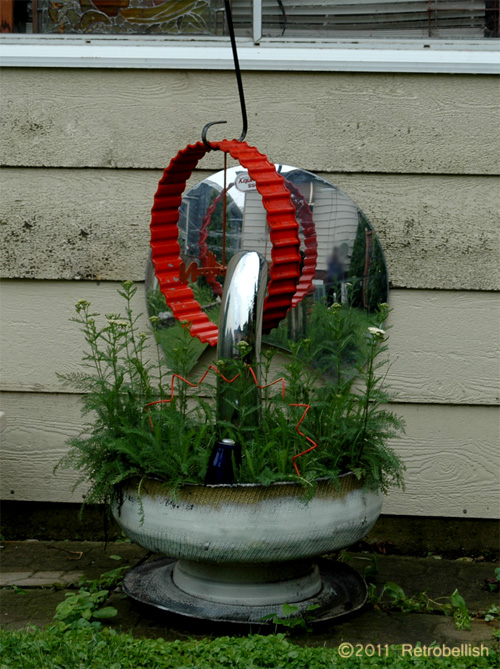
Reclaimed Car Tire Trash Art